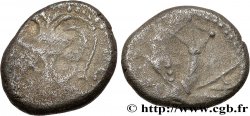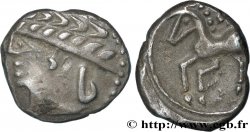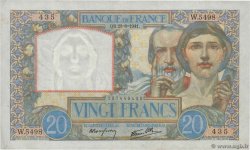bga_919760 - GALLIA - ALLOBROGES (Dauphiné area) Denier au cervidé et au caducée, tête à droite
150.00 €(Approx. 169.50$ | 130.50£)
Quantity
Add to your cart

Type : Denier au cervidé et au caducée, tête à droite
Date: Ier siècle avant J.-C.
Metal : silver
Diameter : 16 mm
Orientation dies : 11 h.
Weight : 2,28 g.
Rarity : R1
Coments on the condition:
Flan centré, aux bords irréguliers. Frappe un peu brouillon au revers. Usure fine et régulière. Patine grise
Catalogue references :
Predigree :
Monnaie de la vente i-Numis du 4 mai 2017, n° 2, présumée provenir du Trésor de Revel-Tourdan (1890) – ABT. n° 124
Obverse
Obverse legend : ANÉPIGRAPHE.
Obverse description : Tête laurée à droite.
Reverse
Reverse legend : ANÉPIGRAPHE.
Reverse description : Cervidé à droite ; au-dessous, “caducée” ou croix.
Commentary
Dans Monnayage Allobroges (CRN 6), l’auteur ne répertoriait que 15 exemplaires de ce type 2 c ou 8 du type 2e. Deroc en 1983 classait ce type “Monnaie au bouquetin ; classe III”. Dans le Nouvel Atlas, cette drachme appartient à la classe IV “de style dégradé à la croix”.








 Report a mistake
Report a mistake Print the page
Print the page Share my selection
Share my selection Ask a question
Ask a question Consign / sell
Consign / sell
 Full data
Full data















